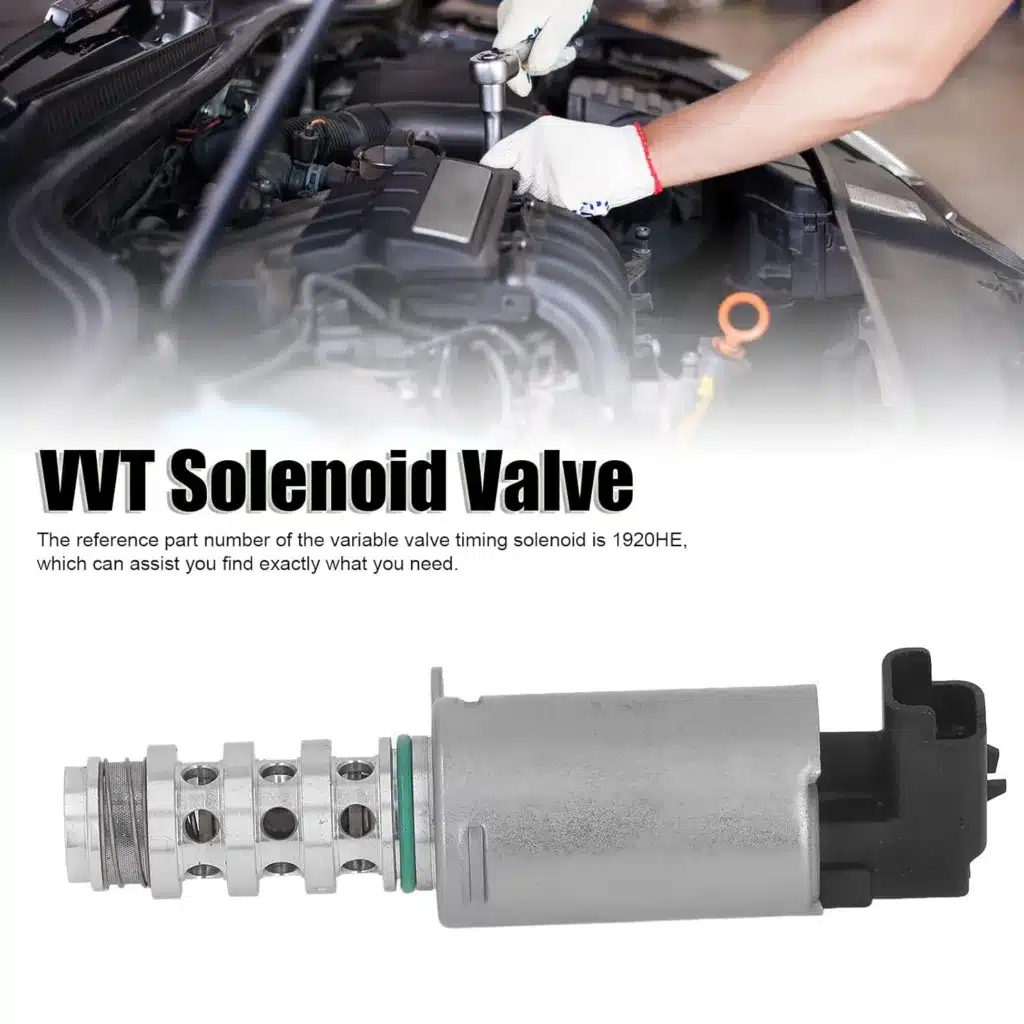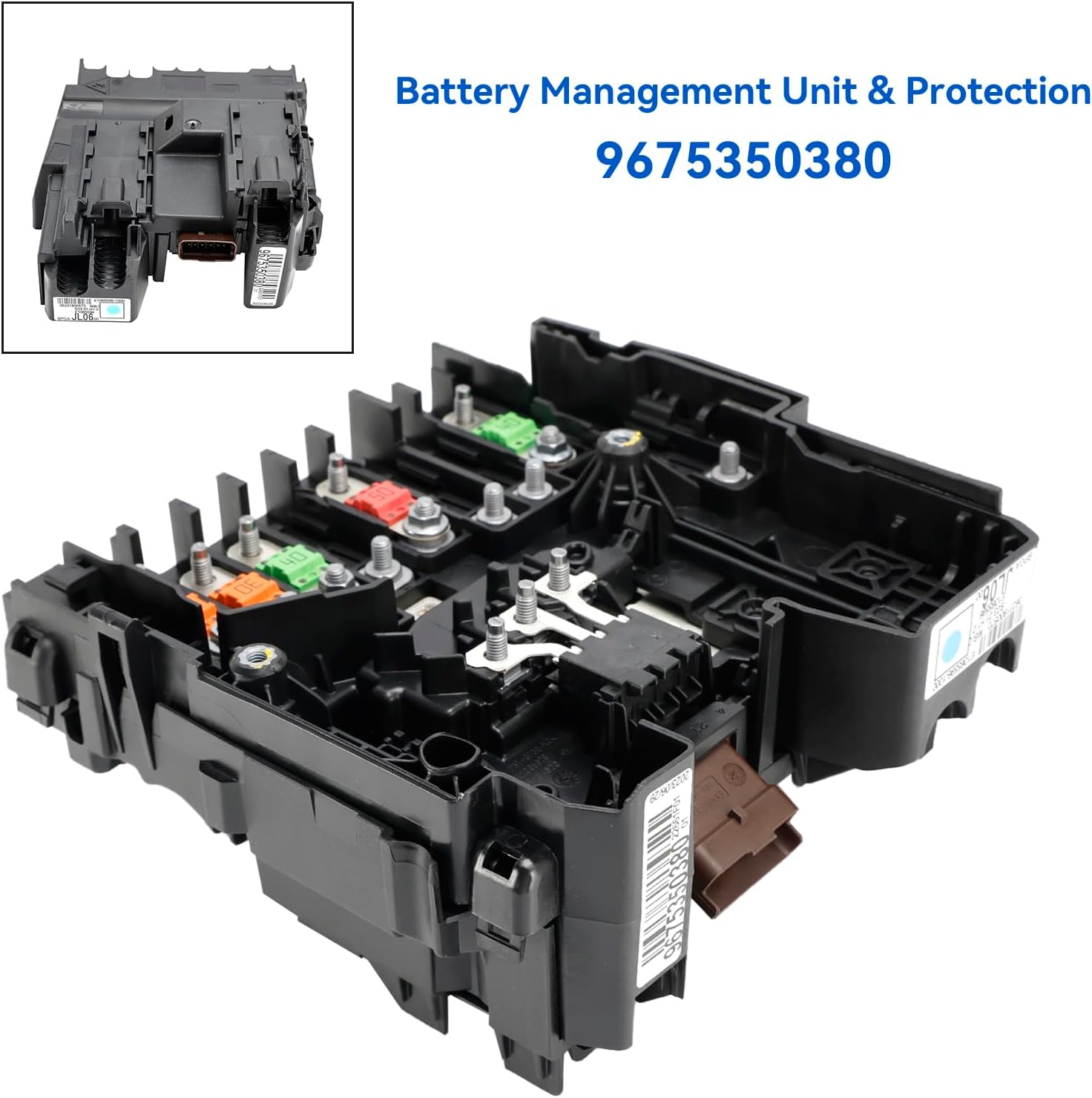Last Updated on 2025-06-27 by Car Parts Expert
In the ever-evolving world of automotive technology, engine efficiency and performance are paramount. One critical component that plays a significant role in achieving these goals is the Engine Oil Control VVT (Variable Valve Timing) Solenoid. This sophisticated device is essential for optimizing valve timing, enhancing fuel economy, and reducing emissions. In this comprehensive blog post, we’ll delve into the intricacies of the Engine Oil Control VVT Solenoid, exploring its function, benefits, maintenance, and troubleshooting tips.
What is the Engine Oil Control VVT Solenoid?
The Engine Oil Control VVT Solenoid is an electronic valve that regulates the flow of oil to the variable valve timing (VVT) system in a modern internal combustion engine. VVT technology allows the engine to adjust the opening and closing times of the intake and exhaust valves to optimize performance and efficiency across a wide range of operating conditions. The solenoid controls this process by modulating the pressure and flow of oil to the VVT actuators, which in turn adjust the valve timing.
How Does the VVT Solenoid Work?
The VVT solenoid operates using a simple yet effective principle. It consists of an electromagnetic coil wrapped around a ferromagnetic core. When an electric current is applied to the coil, it creates a magnetic field that attracts a plunger or armature inside the solenoid. This movement alters the flow path of oil within the system, either allowing it to flow to the VVT actuators or bypassing them.
In most modern engines, there are typically two VVT solenoids: one for the intake valves and one for the exhaust valves. These solenoids are controlled by the engine management system, which adjusts the current to the solenoids based on various inputs such as engine speed, load, and temperature.
Benefits of VVT Technology
The implementation of VVT technology and the Engine Oil Control VVT Solenoid offers several key benefits:
Improved Fuel Economy: By optimizing valve timing, the engine can operate more efficiently, reducing fuel consumption and emissions.
Enhanced Performance: VVT allows the engine to produce more power when needed, such as during acceleration, while also providing smoother idle and lower emissions at cruise speeds.
Reduced Emissions: Better valve timing control helps to minimize the amount of unburned hydrocarbons and oxides of nitrogen emitted from the engine.
Broader Power Band: VVT technology enables the engine to produce useful power over a wider range of RPMs, improving driveability and responsiveness.
Maintenance and Inspection
Like any other component in your vehicle, the Engine Oil Control VVT Solenoid requires regular maintenance and inspection to ensure it operates correctly. Here are some tips for keeping your VVT solenoid in top condition:
Regular Oil Changes: Clean, fresh oil is crucial for the proper functioning of the VVT system. Follow the manufacturer’s recommended oil change interval and use the specified oil grade.
Check for Leaks: Inspect the oil lines and connections to the VVT solenoids for any signs of leaks. A leak can cause a loss of oil pressure, which can adversely affect valve timing.
Inspect Solenoid Wiring: Visually inspect the wiring harness and connectors to the VVT solenoids for any signs of damage or corrosion. Replace any damaged components promptly.
Listen for Abnormal Noises: If you hear any unusual noises coming from the engine, such as ticking or knocking, it could be a sign of a failing VVT solenoid or actuator. Have the system inspected by a qualified technician.
Use OEM Parts: When replacing the VVT solenoid or any other component in the VVT system, use genuine OEM parts to ensure compatibility and reliability.
Troubleshooting Common Issues
Despite its sophistication, the Engine Oil Control VVT Solenoid can experience issues that can affect engine performance. Here are some common problems and troubleshooting tips:
Sticky Solenoid: Over time, the solenoid can become sticky due to contamination or debris in the oil. This can cause the solenoid to stick in one position, preventing it from adjusting valve timing as needed. Cleaning the solenoid and flushing the oil system may help restore functionality.
Electrical Fault: The solenoid relies on an electrical signal from the engine management system to operate. If there is a fault in the wiring harness, connectors, or the solenoid itself, it may not function correctly. Use a diagnostic scanner to check for any fault codes related to the VVT system and inspect the electrical components accordingly.
Oil Pressure Issues: The VVT system relies on oil pressure to operate. If there is a loss of oil pressure due to a leak, clogged oil passages, or a failing oil pump, it can adversely affect valve timing. Check the oil level, pressure, and condition, and inspect the oil system for any leaks or restrictions.
Actuator Failure: The VVT actuators, which are controlled by the solenoids, can fail over time due to wear and tear. This can cause the valves to be out of sync with the camshafts, affecting engine performance. If the actuators are suspected of failing, they should be inspected and replaced if necessary.
Software Update: In some cases, issues with the VVT system may be related to the engine management software. Manufacturers may release software updates to address known issues or improve system performance. Check with your dealer or a qualified technician to see if any software updates are available for your vehicle.
The Engine Oil Control VVT Solenoid is a critical component in modern engines
The Engine Oil Control VVT Solenoid is a critical component in modern engines, playing a vital role in optimizing valve timing, enhancing fuel economy, and reducing emissions. By understanding its function, benefits, and maintenance requirements, you can help ensure that your vehicle operates efficiently and reliably.
Regular inspections, oil changes, and the use of genuine OEM parts are key to keeping your VVT solenoid in top condition. If you encounter any issues with the VVT system, prompt diagnosis and repair are essential to prevent further damage and maintain engine performance.
At Shengfeng, we specialize in automotive components and offer a wide range of VVT solenoids and other engine parts for various makes and models. Our team of experts is dedicated to providing you with the highest quality parts and exceptional customer service. Whether you’re looking for a replacement VVT solenoid or need advice on maintaining your engine, we’re here to help.
Remember, keeping your engine in top condition is essential for safe, efficient, and enjoyable driving. By taking care of your Engine Oil Control VVT Solenoid and other critical components, you can help ensure that your vehicle performs its best for years to come.









